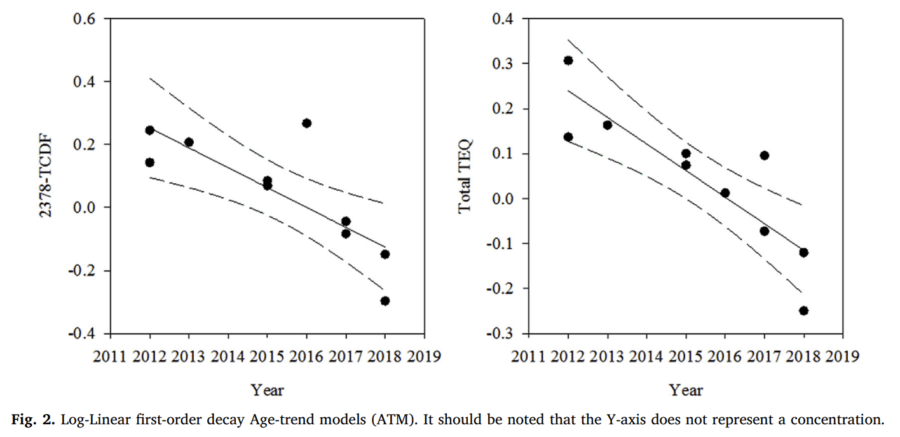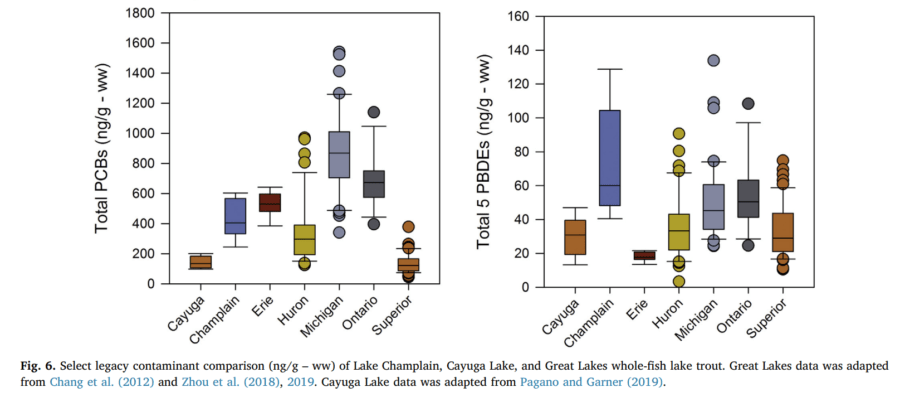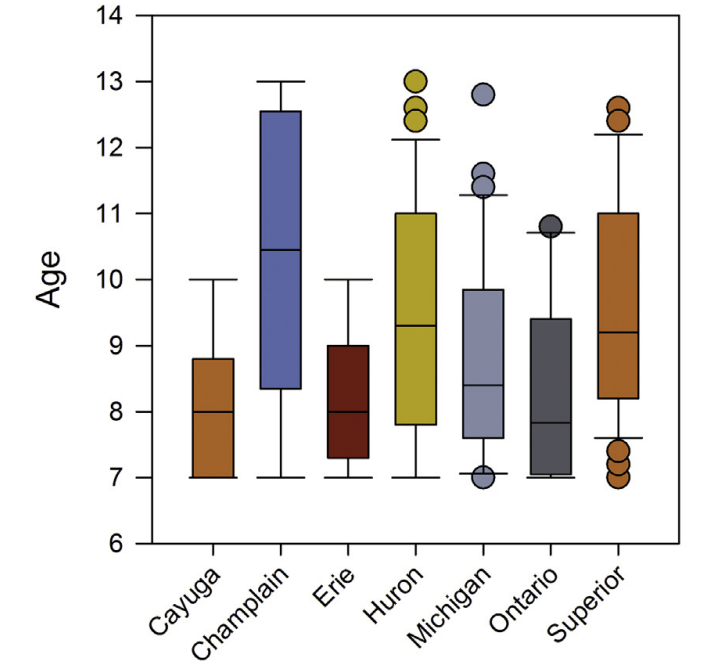Concentrations of legacy organic contaminants in Lake Champlain lake trout
Project Summary:
From 2012-2018, researchers measured the concentrations of six types of organic contaminants in lake trout collected from Lake Champlain.
Legacy organic contaminants and dioxin-like compounds are compounds that can be produced by industrial activity. They include polychlorinated biphenyls (PCBs), polybrominated diphenyl ethers (PBDEs), organochlorine pesticides (OCPs), polychlorinated naphthalenes (PCNs), polychlorinated dibenzo-p-dioxins, and polychlorinated dibenzofurans (PCDD/Fs). These contaminants were released before modern environmental protection measures and persist in the environment even after the industrial activity has ceased. Specific sources of these contaminants to Lake Champlain include the former Ticonderoga Paper Mill, deposits in Burlington Harbor and Cumberland Bay – Wilcox Dock, pesticides formerly used in agricultural applications, and wastewater treatment facilities.
To determine the concentrations and trends of legacy contaminants in lake trout from 2012-2018, the researchers collected and analyzed samples from whole lake trout, filets, and eggs each year (excluding 2014). The authors controlled for fish age when comparing measured contaminant concentrations, since lake trout accumulate these toxics as they age.
Key Results:
- PCBs were the most abundant legacy contaminant measured in all lake trout samples. Concentrations of legacy compounds such as PCBs, PBDEs, and organochlorine pesticides, were an order of magnitude higher than concentrations of dioxin-like compounds.
- Overall, contaminant concentrations decreased over the study period. Percent decreases ranged from 20.9% – 39.3%.

- The concentrations of dioxin-like contaminants measured in 2018 exceeded thresholds for wildlife consumers of aquatic biota. Whole-fish and filet samples exceeded thresholds for birds and mammals, while the concentrations measured in trout eggs exceeded thresholds for mammals only. Modeling indicates that concentrations of dioxin-like contaminants will drop below the threshold for birds between 2035 – 2047, and below the threshold for mammals between 2062 — 2088.
- All lake trout filets analyzed in this study exceeded the US Environmental Protection Agency’s (EPA) human health cancer screening value for total toxic equivalence by a significant margin.
- The authors found that the general mechanisms of contaminant uptake, trends, and yearly decline in the concentration of studied contaminants reflect those recently described in the Great Lakes.


Other Takeaways:
- The researchers note that deposits of these legacy contaminants remaining in Lake Champlain could be increasingly re-mobilized due to the potential for stronger storms, increasing variability in water levels, enhanced wave action, and increased air and water temperatures predicted by recent climate change models.
- Additional research is needed to identify and quantify the remaining sources of dioxin-like compounds in Lake Champlain. The researchers specifically point to the Kraft mill sludge beds near Ticonderoga, NY as a site for further investigation.
Read the full article at this link.
Pagano, James J., Garner, Andrew J. (2020). Concentrations, toxic equivalence, and age-corrected trends of legacy organic contaminants in Lake Champlain lake trout: 2012–2018. Environmental Research, 184, 1-12. https://doi.org/10.1016/j.envres.2020.109329
Cover photo provided by J. Ellen Marsden, UVM.
